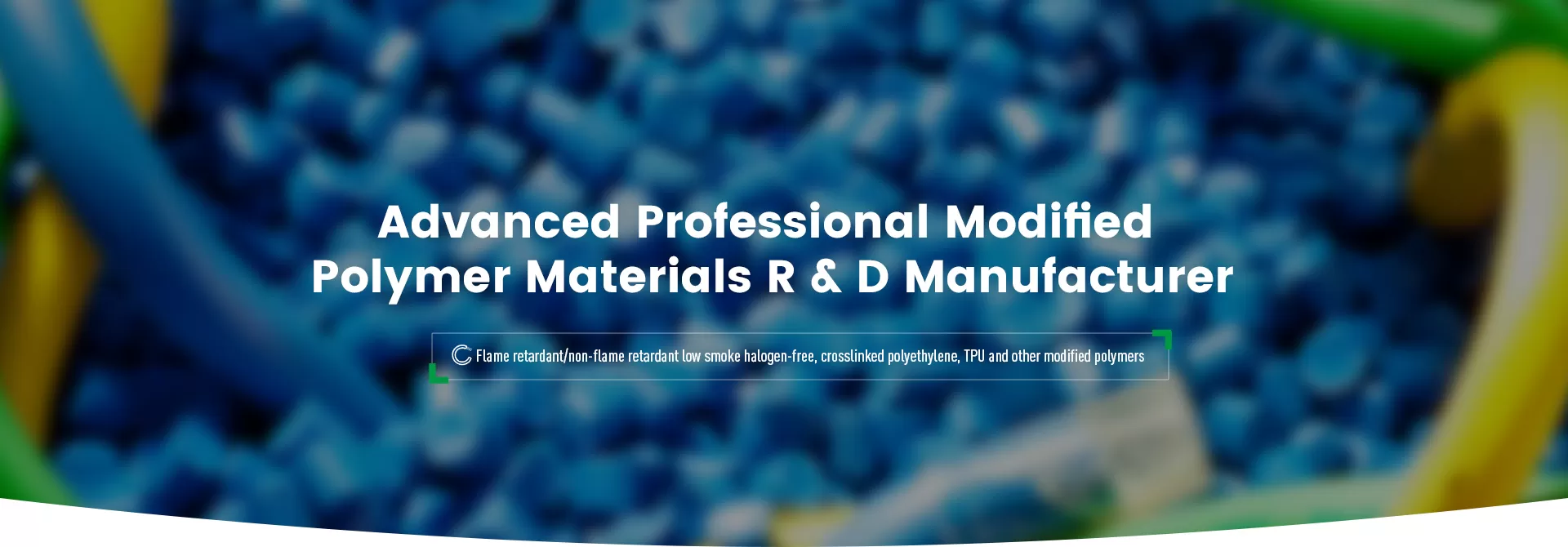

This product is made of polymer resin as the base material, halogen-free flame retardant, cross-linking agent, antioxidant and other additives, and is mixed, plasticized and granulated. It does not contain harmful substances such as heavy metals, and has excellent mechanical properties, electrical properties and wide processing temperature margin.
Applicable to Photovoltaic Cable Jacket materials that meet the waterproof performance indicators in EN 50618:2014, IEC 62930, and 2PFG2750.
XLPE Cross-linked Polyethylene Is a material commonly used in cable jacket. It has good electrical properties, heat resistance, and chemical resistance.
Heat resistance: XLPE Jacket materials can maintain stable performance at higher temperatures and are generally suitable for working temperature environments of 90°C and above.
Chemical resistance: XLPE is resistant to many chemicals, including acids, alkalis, and organic solvents, which makes it suitable for a variety of environmental conditions.
Resistance to environmental stress: XLPE Jacket materials are resistant to the effects of ultraviolet rays and ozone and are suitable for outdoor use.
Abrasion resistance: XLPE materials have certain abrasion resistance and are suitable for applications that need to withstand mechanical friction.
Electrical properties: XLPE is an excellent electrical insulation material with high resistivity and good electrical properties, suitable for cable insulation and sheathing.
Environmental protection: Compared with traditional PVC materials, XLPE is more environmentally friendly during production and use, does not contain harmful substances, and produces less toxic gases when burned.
Processing performance: XLPE materials can be processed into cable sheaths through extrusion technology and have good processing performance.
Mechanical protection: XLPE jacket provides additional mechanical protection for the cable to prevent external damage.
Application areas: XLPE jacket cables are widely used in power transmission, control cables, instrument cables, and environments that require heat and chemical resistance.
| No. | Testing Items | VALUE | Typical Value | Unit | Method |
| 1 | Density(20℃) | -- | 1.35 | g/cm3 | GB/T 1033 |
| 2 | Tensile strength | ≥10 | 13.5 | MPa | GB/T 1040.2 |
| 3 | Elongation at break | ≥250 | 320 | % | GB/T 1040.2 |
| 4 | Hot extension 250℃, 0.2Mpa, 15min | ||||
| The elongation rate under load | ≤100 | 40 | % | GB/T 2951.21 | |
| Permanent rate of change after cooling | ≤15 | 0 | % | ||
| 5 | heat deterioration 150±2℃, 168h | ||||
| Rate of change in the tensile strength | ≤±30 | 14 | % | GB/T 2951.12 | |
| Rate of change of fracture elongation | ≤±30 | -12 | % | GB/T 2951.12 | |
| 6 | Impact brittlement temperature(-40 ºC) | ≤15/30 | 0/30 | GB/T 5470 | |
| 7 | Volume resistivity(20ºC) | ≥1.0×10^12 | 2.5×10^12 | Ω·m | GB/T 1410 |
| 8 | Volumere sistivity(90ºC) | ≥1.0×10^9 | 1.2×10^9 | Ω·m | GB/T 1410 |
| 9 | Dielectric strength(20ºC) | ≥20 | 30 | MV/m | GB/T 1408.1 |
| 10 | Water resistance AD8 | ||||
| Tensile strength after 100 days of immersion in water | ≥7 | 8.5 | MPa | GB/T 1040.2 | |
| The rate of change in tensile strength after 28/100 days of immersion | ≤±15 | -10 | % | GB/T 2951.12 | |
| Elongation at break after 100days of immersion in water | ≥200 | 258 | % | GB/T 1040.2 | |
| The rate of change ofelongation at break after 28/100 days of immersion | ≤±20 | -16 | % | GB/T 2951.12 | |
| 11 | Resistant to damp heat 90℃ /relative humidity 85%, 1000h | ||||
| Rate of change in the tensile strength | ≤-30 | -19 | % | EN60068-2-78 | |
| Rate of change of fracture elongation | ≤-30 | -20 | % | EN60068-2-78 | |
| 12 | HCl and HBr gas releases | ≤2 | 0 | mg/g | GB/T17650 |
| 13 | Combustion gas PH | ≥4.3 | 5.9 | / | GB/T17650 |
| 14 | Combustion gas conductivity | ≤10 | 4 | μs/mm | GB/T17650 |
| 15 | LOI | ≥28 | 30 | % | GB/T2406 |
| 16 | Weather/UV resistance test 720h(360/loops) | ||||
| Tensile strength retention | ≥70 | 85 | % | EN 50618:2014 appendix E | |
| Elongation at break retention | ≥70 | 88 | % | EN 50618:2014 appendix E | |
| 17 | Ozone resistant 25±2℃, 24h Ozone concentration (250-300)×10^-4% | ||||
| \ | No cracking | No cracking | IEC 60811-403 | ||